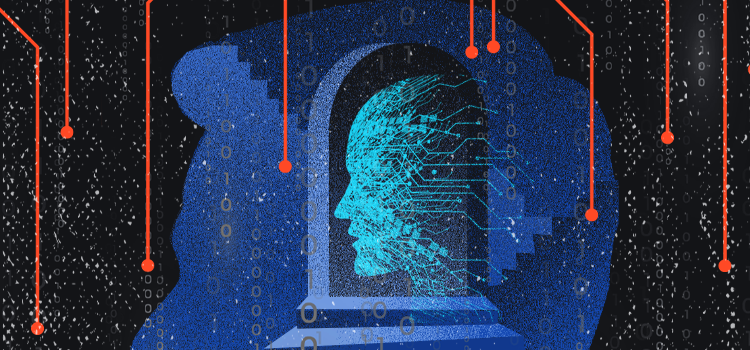February 09, 2021
From The Age of Information to The Age of Intelligence

Laura O'Driscoll
Content Manager
We live in a world where information is everywhere but rarely exploited to its full potential. The distinction between information and intelligence has long been established in specialist sectors. But in the broader world, and even within these sectors, the terms are often used interchangeably. As a result, vast amounts of valuable information are either unused, underused, or misused. Decision-makers in government, commerce, law, and law enforcement, stand to gain much from an enhanced understanding of the difference between information and intelligence: and how to get from one to the other.
What is the difference, and why does it matter?
In simple terms, a piece of data is a piece of factual information. It’s a fixed point within the overall picture: an important part of the whole, but rarely useful, or meaningful, in and of itself. As per its dictionary definition, unprocessed data typically includes “both useful and irrelevant or redundant information,” and “must be processed to be meaningful.” In short, it is a basis for reasoning: not the end result.
Information is one step up. Where data simply is, information informs. It is a simplistic way of arranging data to mean something. If an individual tweet is a piece of data, the number of tweets using a particular hashtag is a piece of information. This is a little more useful but still not actionable. At some point, further analysis must be provided; context accounted for; complex connections made; syntheses and hypotheses drawn; corroboration and verification reliably sourced; in short, value must be added to turn statement of fact into actionable advice.
Intelligence is applied information: or the “skilled use of reason.” Where information informs, intelligence extrapolates, explores, and explains. Getting from information to intelligence isn’t as simple as arranging the information in a particular order to generate a meaning. Crossing the gap from data to information requires logic. Making the leap between information and intelligence requires reason, judgment, initiative. It requires constant, dynamic analysis: a process known as the Intelligence Cycle.
The Intelligence Factor: A Pile of Bricks is No Castle
Intelligence is elusive because it is “alive” in a way that data and information aren’t. It learns, adapts, and develops. The Intelligence Cycle reflects this. Its phases include planning, collection, evaluation, organization, analysis, production, dissemination, and feedback. Feedback establishes new information requirements, returning us to the collection phase. While this process may sound over-complex, history’s most notorious intelligence failures underscore the importance of well-developed intelligence: and the dangers of stopping short at raw data or unprocessed information.
It was the perceived need to separate the “signals” from the “noise,” for example, that eventually led to the creation of the Central Intelligence Agency (CIA), after failures in cohesive intelligence facilitated the disastrous attack on Pearl Harbor. Many have assessed that before the 9/11 attacks, information was without a doubt collected by someone and stored somewhere, but that it was not analyzed and processed in such a way as to be understood and therefore actionable. The 9/11 Commission’s official report echoed the fallout from Pearl Harbor, referring to “the pervasive problems of managing and sharing information.”
“Information sharing” is an often-used but incomplete description of such intelligence failures. The most crucial step of the Intelligence Cycle - and the one most often missing - is the analytical component. Sharing, in and of itself, has limited use. More raw data, or more unprocessed information, simply means more white noise. Without analysis, all you are doing is producing, disseminating, and recycling limited, potentially faulty representations of fact. It is the organization of data into information and the analysis of information into intelligence, generating meaningful cohesion.
This affects critical decision-makers not just in government and law enforcement but across a whole range of sectors. There’s nothing worse, as a litigator, than finding out too late that your entire case was built on faulty, incomplete, or misconstrued information: or, as a corporate leader, making strategic decisions based on a misleading picture of the data. Journalists are increasingly relying on open source intelligence (OSINT) to find leads and build stories. But over-eager investigators, failing to analyze the information they gather sufficiently, have been known to publicly misidentify wrongdoers - leading to the threat of violence against innocent people.
Regardless of sector, or indeed geography, no recent chain of events better demonstrates the need to rapidly turn vast amounts of data into actionable intelligence than the Coronavirus crisis. Over the last twelve months, the use and misuse of data has bookended great highs and great lows. With the words “unpredictable” and “unprecedented” carrying the zeitgeist of the times, the ability to see the bigger picture and see around corners has never been more important.
Sharp Minds, Sharp Tools: The Intelligence Craft
At the intelligence stage, interpretation and agency - and therefore complexity and risk - increase significantly. You are no longer working with a pure statement of fact, passively truthful but useless in action. Intelligence is hazardous material. Its production and handling require sharp minds and sharp tools.
Fortunately, sophisticated tools to support the intelligence process are developing apace. It’s one thing to search, scrape, and collate large amounts of raw data or systematically arrange that data into coherent information. It’s another thing entirely to turbocharge the development of information into intelligence - both the hardest and the most critical part of the process - using artificial intelligence, machine learning, and predictive analytics.
The intelligence cycle’s progressive dynamism relies on constant analysis and feedback: two critical functions of the human mind that remain immensely difficult to replicate. And while technology may not yet replace the human mind on this front, it can now go a significant way towards supporting it.
Consider, for example, a case in which analysts are working against the clock to understand and predict the activities of a vast, complex, and widespread international criminal organization. An advanced intelligence tool like Skopenow can rapidly scan the web at every level (surface, deep, and dark), across multiple geographies, in various languages, and on numerous platforms, to discover and verify connections between online and real-world entities and individuals. Skopenow can build comprehensive digital records, capturing and archiving accounts, pages, posts, and documents, including all metadata before they are taken offline. They can learn from the captured data, utilizing keywords of interest to hone ongoing searches; they can continually monitor activities and alert analysts immediately to critical developments.
Simply being presented with the reams of data underlying these strands would be overwhelming. Doing all the legwork yourself would be a long and arduous process, with significant room for human error: exhaustion and overexposure make for errors in judgment, missed opportunities, and bad decisions. Making use of appropriate technology, on the other hand, using appropriate technology would maximize potential and minimize room for error, wasted time, and energy. All raw data and background information would be systematically recorded and archived to reach into, should you need it. But first and foremost, you would be presented with intelligence - well-synthesized, comprehensive reports - leaving your brain free to do what it does best. Analyze, explore, explain, and make informed decisions.
Ultimately, the future of intelligence-driven action isn’t a case of human versus machine. The best leaders know how to capitalize on all the tools at their disposal to achieve the best result: in this case, how to integrate technology with human capabilities to turn raw data into actionable intelligence, at a sufficient pace yet with enough depth. Bridging this gap will take forward-thinking leaders from the Information Age into a new Age of Intelligence.


